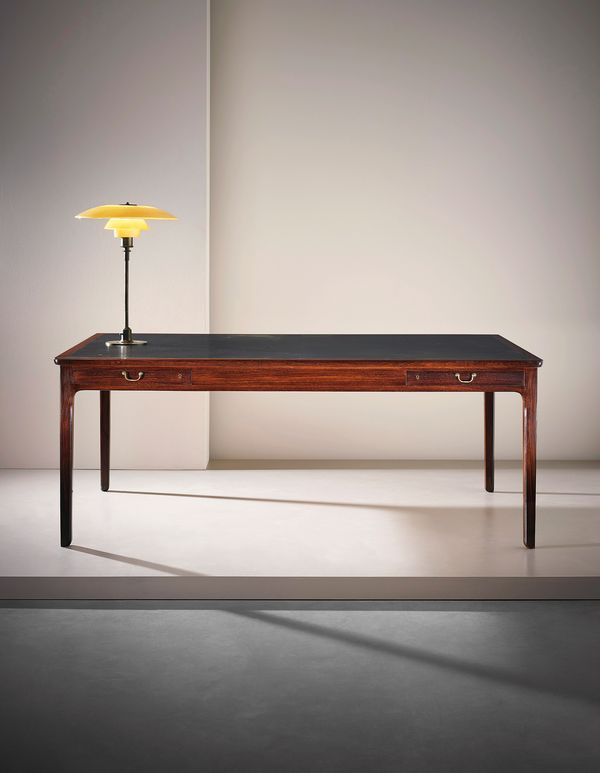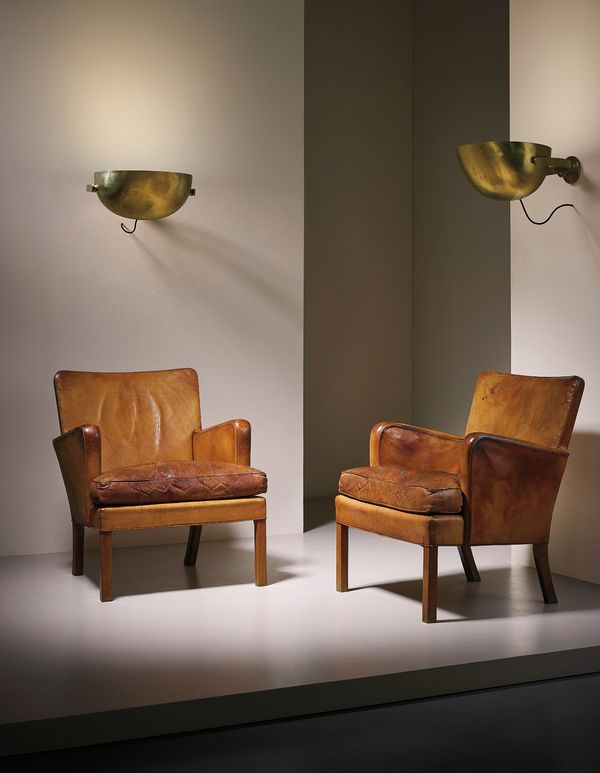Ole Wanscher Partner's desk, circa 1960. Rosewood, rosewood-veneered wood, leather and brass.
The collaboration between architect and master cabinetmaker is one of the key factors that contributed to the success of Danish furniture in the twentieth century.
The burgeoning middle class of the nineteenth century generated an increased demand for furniture; however, industrialisation and cheaply imported goods threatened the role of Danish cabinetmakers at the outset of the twentieth century. The annual Copenhagen Cabinetmakers' Guild Furniture Exhibitions, which began in 1927, intended to revive the imperiled industry. A new wave of talented architects infuenced by Kaare Klint, who in 1923 had helped to establish the furniture school at the Royal Academy of Fine Arts, emerged in Denmark. Amongst these were Ole Wanscher, Børge Mogensen, Arne Jacobsen and Hans Wegner.
Arne Jacobsen Unique chest of drawers, designed for Bernard Schepler's villa, Vedbæk, Denmark, 1933. Cuban mahogany, Cuban mahogany-veneered wood, oak and brass.
These architects needed cabinetmakers to execute their ideas, and whilst some of the traditional cabinetmakers were not keen on collaborating with this new guard of young innovators, others, including Rud. Rasmussen (founded 1869) and A.J. Iversen (founded 1916), embraced the new designs, particularly given the fact that critics had accused the guild exhibitions of being too retrospective.
Kaare Klint Pair of early 'Easy' armchairs, model no. 5313, designed 1927, produced from 1936. Niger leather and Cuban mahogany.
The fine craftsmanship of Danish modern furniture would not have been possible had it not been for these creative partnerships between architect and cabinetmaker. Examples of this exceptional synergy are Rud Rasmussen's refined execution of both the unique chest of drawers for Bernard Schepler's villa designed by Arne Jacobsen (lot 7), and Kaare Klint's beautifully proportioned early pair of 'Easy' armchairs exquisitely produced in Cuban mahogany and Niger leather (lot 8). The fine rosewood partner's desk executed by master cabinetmaker A.J. Iversen and designed by Ole Wanscher (lot 51) again defines this successful collaboration between cabinetmaker and architect.


